Every coin’s design tells a story, but sometimes if you look a little closer, you’ll see an additional feature in the form of a “mark”.
But what are mint marks and privy marks? And what do they tell us about a coin?
What’s in a mark?
Marking a coin is not a new phenomenon. It dates back centuries, to coins from Ancient Greece. Marks would be used to identify the origin of the metal used.
As coin minting became more widespread, a mark was often required to leave a lasting identifier to show where the coin was first minted.
This is a mint mark. You see them on US coins like the Morgan Dollar that was minted across the United States at 5 different minting facilities – Philadelphia, New Orleans, San Francisco, Carson City and Denver. Depending on where the coin was minted it would have one of the following mint marks, found at the base of the famous eagle design:
New Orleans – O
San Francisco – S
Carson City – CC
Denver – D
Philadelphia – No mint mark
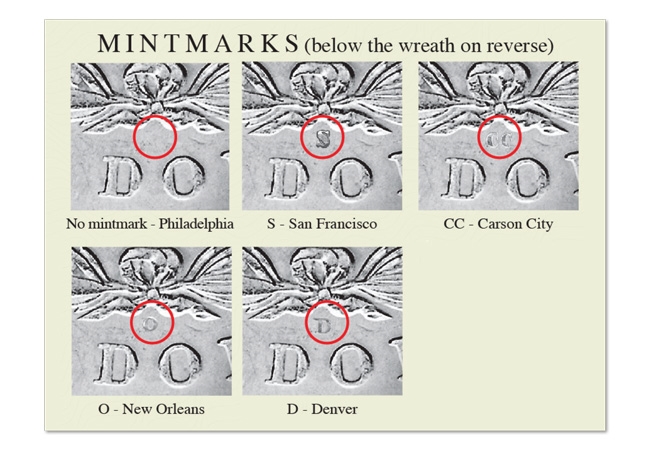
Closer to home, you can also see mint marks on certain classic Sovereigns. At the height of the British Empire, Sovereigns were struck all around the world meaning that the coins would need a mark to know where they had been minted.
Look at the reverse of any classic Sovereign and you may see one of these mint marks. It would be tucked into the very base of the famous St George and the Dragon design.
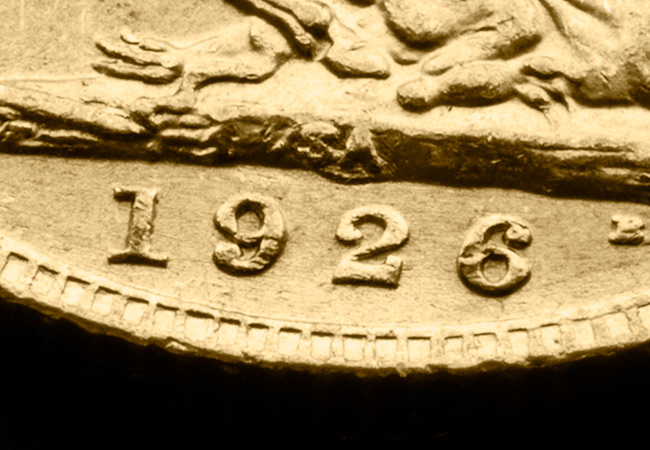
The Sovereign mint marks are as follows:
Sydney – S
Melbourne – M
Perth – P
Ottawa (Canada) – C
Pretoria (South Africa) – SA
Bombay (India) – I
London – No mint mark
Privy Marks
These days we often see marks on commemorative coins tied to the subject being honoured on the coin. This is what’s known as a privy mark.
Whilst mint marks are usual a simple addition of one or two letters, privy marks will normally be far more artistic, often using a stylish design that is linked to the commemoration.
The most obvious example of this right now is the 2021 UK Gold Proof Sovereign, which features an elegant crown and the number 95 beneath it as a nod to Her Majesty’s 95th birthday on 21 April 2021.
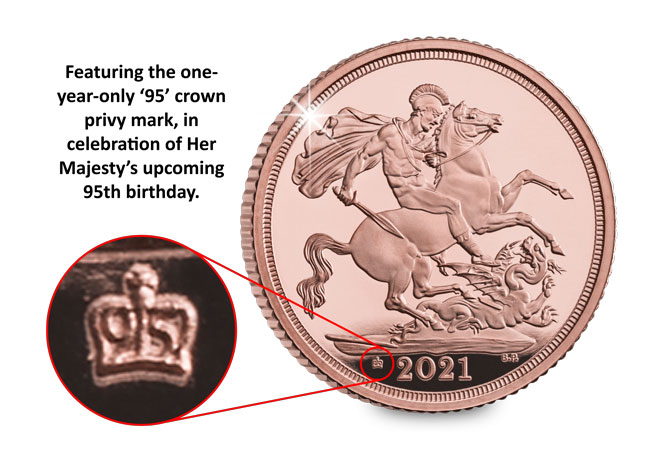
The power of privy marks
You only need to look at what happens to commemorative coins that carry a privy mark to see the power of these special one-year-only additions.
The 2020 UK Proof Sovereign featured one to mark the 200th anniversary of King George III’s death and it sold out its full edition limit of 7,995 coins.
Go back further and you’ll find one of the most collectable issues of recent years. The 2017 Krugerrand range featured a special 50th anniversary privy mark and it helped sell out thousands upon thousands of coin.
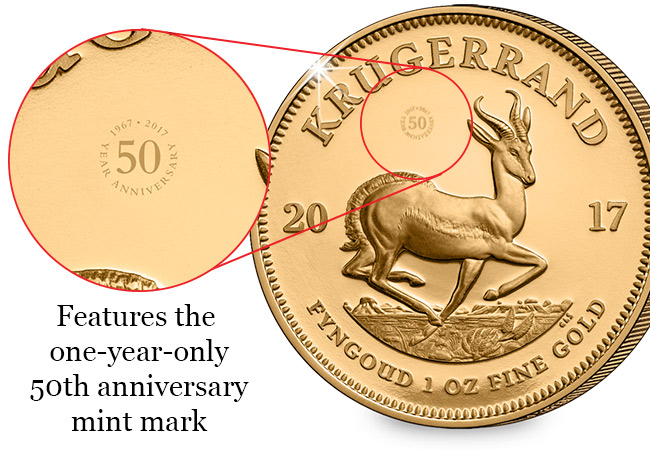
Top Marks
The 2021 Proof Sovereign and 50th anniversary Krugerrands are amongst the most collectable modern coins to carry a privy mark, but it’s perhaps the classic coins that collectors hunt for most eagerly.
With all modern Sovereigns being struck by The Royal Mint at their Llantrisant home, the age of mint marks on Sovereigns has passed, so those with mint marks from a bygone era have significant appeal.
Certain years stand out above all others. 1918 is a year that helped shape the world as we know it, with the end of the First World War at the very top of the list and it created an exceptional piece that was struck for one year only.
Before the war, gold was being shipped from South Africa to London, but this was too precarious during the conflict, so The Royal Mint employed the Bombay Mint in 1918 and sent the gold from South Africa there to mint into Sovereigns.
It also meant that it was easier to pay British Army personnel fighting the war in Asia.
But once the war was over, there was no further requirement and the Bombay branch of The Royal Mint was closed in April 1919, making the 1918 Sovereign the only pre-QEII Sovereign issued in India and the only one with an “I” mint mark.
Will collectors be searching for the 2021 Sovereign 100 years from now for the privy mark it carries?
If you’re interested…
You now have the opportunity to add the sought-after 1918 Bombay Sovereign to your collection.
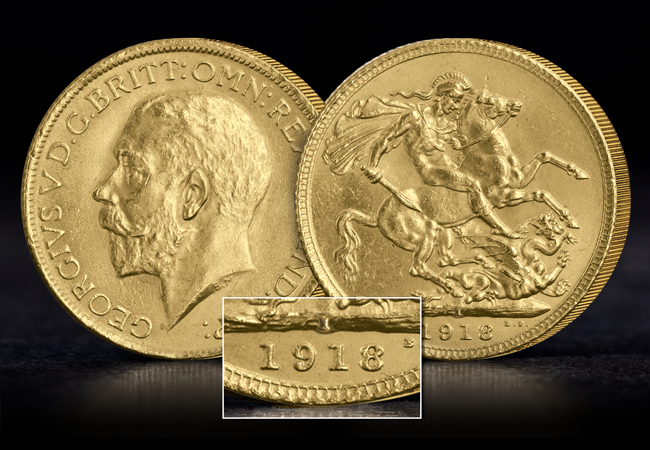
Issued over 100 years ago, it is the shortest lived Sovereign of all time, being issued for one year only, making it a Sovereign that belongs in every serious collection. Click here to secure one now >>